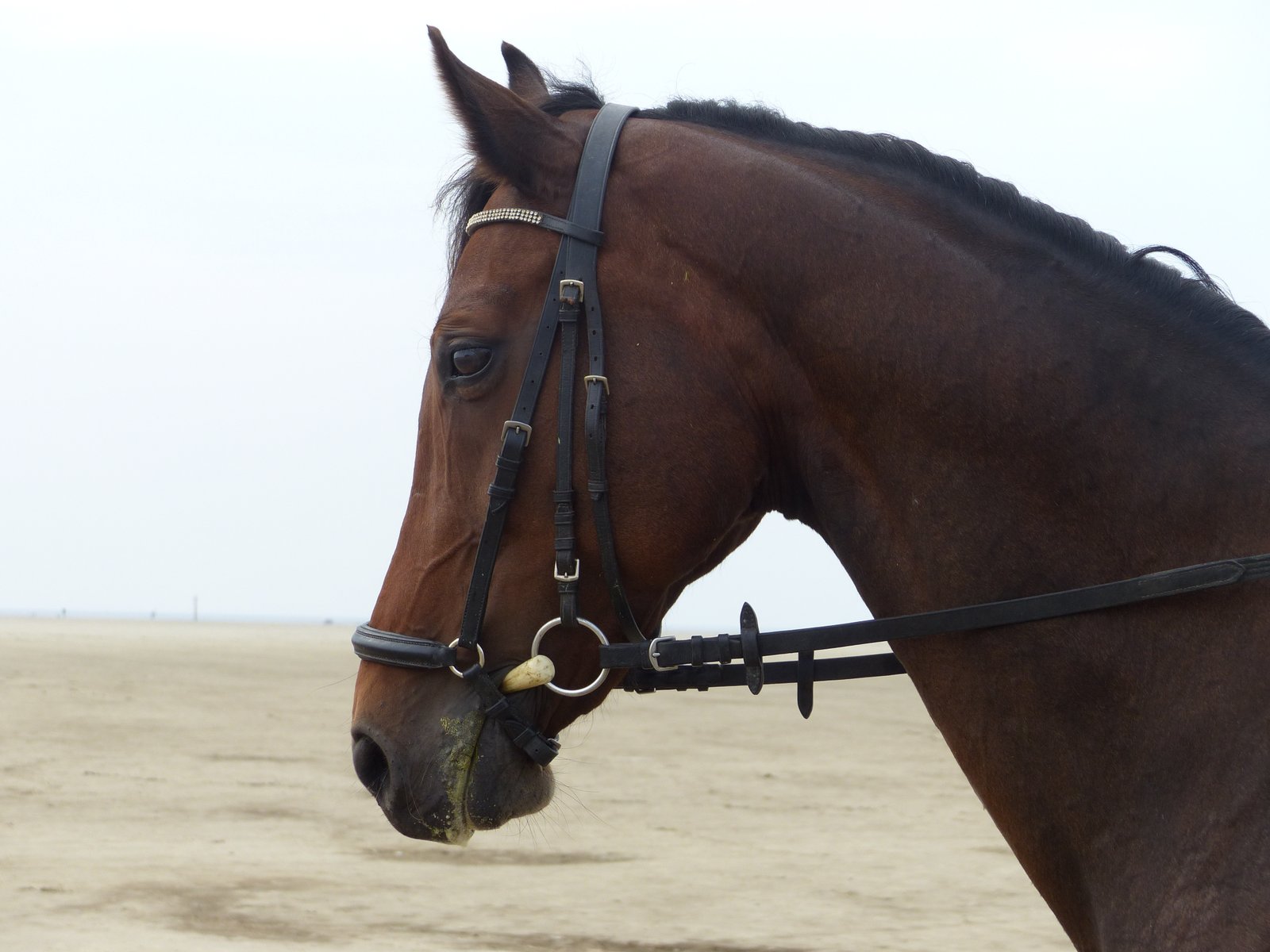Walking your furry friend can be an exciting adventure, but if your four-legged companion pulls on the leash with the strength of a thousand suns, the experience can quickly turn into a tug-of-war struggle. Fortunately, there is a solution that goes beyond mere muscle power and allows for a more harmonious walk: the head halter. This ingenious device gently redirects your dog’s attention and helps you regain control while still ensuring their utmost comfort. Join us as we explore the captivating realm of head halters, and discover how to utilize them effectively for dog training, creating a balance between obedience and freedom, one walk at a time.
Table of Contents
- Introduction
- Understanding the Purpose and Benefits of a Head Halter for Dog Training
- Step-by-Step Guide to Properly Fitting a Head Halter for Effective Training
- Essential Training Techniques for Utilizing a Head Halter Safely and Successfully
- Common Mistakes to Avoid while Using a Head Halter for Dog Training
- Q&A
- Future Outlook

Introduction
Welcome to our world! Here at [Company Name], we are dedicated to providing you with the best products and services in the industry. Our mission is to exceed your expectations and make your experience with us nothing short of exceptional. Whether you are a new customer or a loyal supporter, we are thrilled to have you on board.
In this section, we will give you a glimpse into who we are, what we stand for, and how we can add value to your life. Get ready to embark on a journey that combines innovation, quality, and unparalleled customer service.
Throughout this post, you will discover the story behind [Company Name], our core values, and our commitment to reliability and sustainability. Join us as we delve into the exciting world of our products and services, and learn how they can positively impact your daily life.

Understanding the Purpose and Benefits of a Head Halter for Dog Training
Dog training can sometimes feel like a daunting task, but with the right tools, it can become a breeze. One such tool that has gained popularity among trainers and pet owners is the head halter. This unique and versatile training aid can revolutionize the way you communicate and understand your furry friend, paving the way for a stronger bond and a well-behaved companion.
So, what exactly is a head halter and how does it work? A head halter is a specially designed collar that fits around your dog’s head and muzzle, giving you control over their movements by redirecting the pulling force towards their head rather than their neck. This gentle and humane method teaches your dog to walk politely on a leash, eliminating excessive pulling and unruly behaviors.
- Improved Control: A head halter provides you with greater control over your dog’s movements, making it easier to guide them during training sessions or on walks.
- Gentle & Humane: Unlike traditional collars that put pressure on the neck, a head halter distributes control evenly across the head, minimizing discomfort and reducing the risk of injury.
- Reduces Pulling & Lunging: By redirecting the force towards the head, a head halter teaches dogs to pay attention to their handler and discourages pulling and lunging behavior.
- Encourages Focus & Engagement: With the distraction of excessive pulling eliminated, your dog can focus on you during training, leading to better engagement and faster learning.
- Promotes Positive Reinforcement: A head halter allows you to reward and reinforce desired behaviors effectively, promoting positive training experiences for both you and your dog.
Now that you understand the purpose and benefits of a head halter, why not give it a try? Consult with a professional trainer to ensure you choose the right one for your dog’s size and temperament. With a head halter in your training toolbox, you’ll discover a whole new world of communication and understanding with your four-legged companion.

Step-by-Step Guide to Properly Fitting a Head Halter for Effective Training
Properly fitting a head halter is crucial for effective training. With the right fit, you can achieve optimal control and comfort for both you and your dog. Follow this step-by-step guide to ensure you get it right:
1. Choose the Correct Size:
Head halters come in various sizes, so make sure you select the one that suits your dog’s breed and build. Measure your dog’s snout circumference and neck size to find the appropriate size chart. It’s essential to have a snug fit without being too tight to avoid discomfort.
2. Introduce the Halter Gradually:
Introduce the head halter to your dog slowly. Start by letting them sniff and examine it. Reward their curiosity with treats and plenty of praise. Once your dog is comfortable, move on to the next step.
3. Position the Halter Correctly:
Slide the halter over your dog’s snout, ensuring the noseband sits just below their eyes. It should rest comfortably without obstructing their breathing or vision. Secure the neck strap snugly behind their ears, adjusting it to fit properly but not too tight. Remember, the goal is to have control without causing discomfort.
4. Attach the Leash:
Clip the leash to the metal ring located beneath your dog’s chin. This allows you to guide your dog gently by turning their head rather than pulling on the leash. The head halter should provide enough control to redirect your dog’s attention.
5. Practice, Patience, and Positive Reinforcement:
Lastly, remember that fitting a head halter is just the beginning. To ensure successful training, practice walking, and other activities with your dog while using the halter. Remain patient, as it may take time for your dog to adjust. Always utilize positive reinforcement techniques to reward good behavior.
Essential Training Techniques for Utilizing a Head Halter Safely and Successfully
Mastering the art of using a head halter can greatly enhance your training sessions with your furry friend. To ensure both safety and success, it is crucial to employ proper training techniques. Here are some essential tips to make the best use of a head halter:
- Start Slow: Begin by allowing your pet to become comfortable with the head halter gradually. Introduce the halter in short sessions, offering treats and praise for positive behavior. This will help them associate the halter with positive experiences and reduce any aversion or anxiety.
- Practice Consistency: Consistency is key when utilizing a head halter. Use the halter consistently during training sessions to reinforce desired behaviors. This will help your pet understand the purpose of the halter and adapt to its use more quickly.
- Use Positive Reinforcement: Positive reinforcement is a powerful tool in training with a head halter. Reward your furry friend with treats, verbal praise, or a pat on the back whenever they respond well to the halter. This will encourage them to repeat the desired behavior and solidify the association between the halter and positive experiences.
- Seek Professional Guidance: If you’re unsure of the correct techniques or struggling to achieve desired results, consider seeking guidance from a professional dog trainer. They can provide expert advice tailored to your pet’s needs and offer personalized training plans.
With patience, practice, and the right approach, a head halter can be a valuable tool for training your four-legged companion effectively. Remember to approach the training process with love, understanding, and a positive mindset to help your furry friend succeed.
Common Mistakes to Avoid while Using a Head Halter for Dog Training
When it comes to using a head halter for dog training, it’s crucial to understand the dos and don’ts to ensure effective and safe training sessions. Avoiding these common mistakes will help you and your furry friend have a successful training experience:
- Using the wrong size: Choosing the correct size head halter is essential for your dog’s comfort and safety. A halter that is too tight can cause discomfort and restrict their natural movements, while a loose fit may lead to inefficacy during training.
- Not acclimating your dog: Introducing a head halter to your dog without proper acclimation can lead to negative associations and resistance. Gradually introduce the halter, allowing your dog to sniff it and rewarding them with treats to associate it with positive experiences.
- Reactive pulling: One of the most common mistakes is allowing your dog to continue pulling on the lead while wearing the head halter. This can cause strain on their neck, potentially leading to discomfort and injury. Remember to always walk with a loose leash and reward your dog for walking calmly by your side.
- Skipping rewards: Failing to reward your dog for good behavior while using the head halter can hinder the effectiveness of the training. Positive reinforcement through treats, praise, or play helps to reinforce desired behaviors and motivates your dog to continue behaving well.
- Using excessive force: It’s important to remember that a head halter should be used as a gentle guiding tool rather than a means of physical restraint. Avoid yanking or jerking the leash, as this can cause stress and potentially harm your dog.
By avoiding these common mistakes, you can make the most out of using a head halter for your furry friend’s training and ensure a positive and successful training journey.
Q&A
How does a head halter help with dog training?
A head halter is a helpful tool for training dogs because it gives you control over their head and mouth. With a head halter, you can redirect your dog’s attention, discourage pulling or lunging, and teach them to have better manners on walks.
Can any dog wear a head halter?
Most dogs can wear a head halter, but it is not suitable for all breeds or individuals. Dogs with short muzzles, like pugs or bulldogs, might need a different type of halter. Additionally, some dogs may not be comfortable wearing a head halter, so it’s essential to introduce it gradually.
How do I properly fit a head halter on my dog?
To ensure a proper fit, adjust the straps of the head halter to comfortably wrap around your dog’s snout and neck. It shouldn’t be too tight or too loose. Make sure the halter doesn’t inhibit their ability to open their mouth, pant, or drink water.
Is there a specific way to introduce a head halter to my dog?
It’s best to introduce a head halter gradually. Start by letting your dog sniff and investigate the halter before gently placing it on their snout for short periods. Reward them with treats and positive reinforcement to create a positive association with the halter.
Can I use a head halter for all types of training?
While head halters are effective for leash manners and loose leash walking, they might not be suitable for all types of training. It’s important to consult with a professional dog trainer to determine whether a head halter is appropriate for the specific training needs of your dog.
Are there any safety precautions to keep in mind when using a head halter?
Never jerk or forcefully pull on the leash when using a head halter, as this can cause injury to your dog’s neck or spine. Be sure to use positive reinforcement techniques and reward your dog for their desired behaviors. Remember, consistency and patience are key in dog training.
Future Outlook
As we reach the end of our journey into the captivating world of head halters, we hope that you’ve gained valuable insights into this innovative tool for dog training. From unraveling the mystery behind how head halters work to understanding the correct way to fit them on your furry friend, we’ve delved into the depths of canine education.
Remember, as with any training method, patience and consistency are the keys to success. While head halters can be a useful aid in communication, always pair them with positive reinforcement techniques. Celebrate every small milestone and watch in awe as your bond with your four-legged companion grows stronger.
In conclusion, whether you’re embarking on an adventure to curb leash pulling or looking to redirect unwanted behavior, a head halter can be your trusty companion. With practice, perseverance, and a dash of creativity, you’ll find that training becomes an enjoyable journey of discovery for both you and your beloved pup.
So, don’t hesitate to embark on this training adventure. Let curiosity guide you, as you learn to uncover the potential hidden within your dog’s ever-so-wagging tail. With a head halter gently guiding your path, a world of new possibilities awaits. Embrace the journey, and watch your canine companion’s transformation unfold before your very eyes.
As an affiliate, my content may feature links to products I personally use and recommend. By taking action, like subscribing or making a purchase, you’ll be supporting my work and fueling my taco cravings at the same time. Win-win, right?
Want to read more? Check out our Affiliate Disclosure page.
